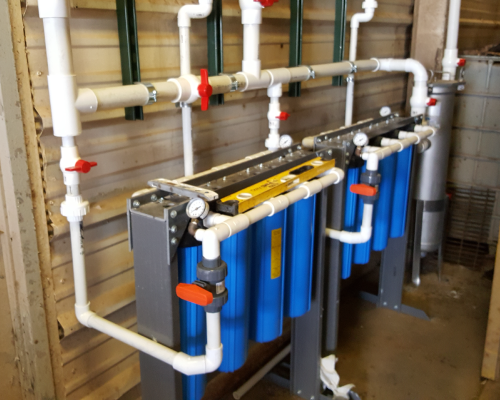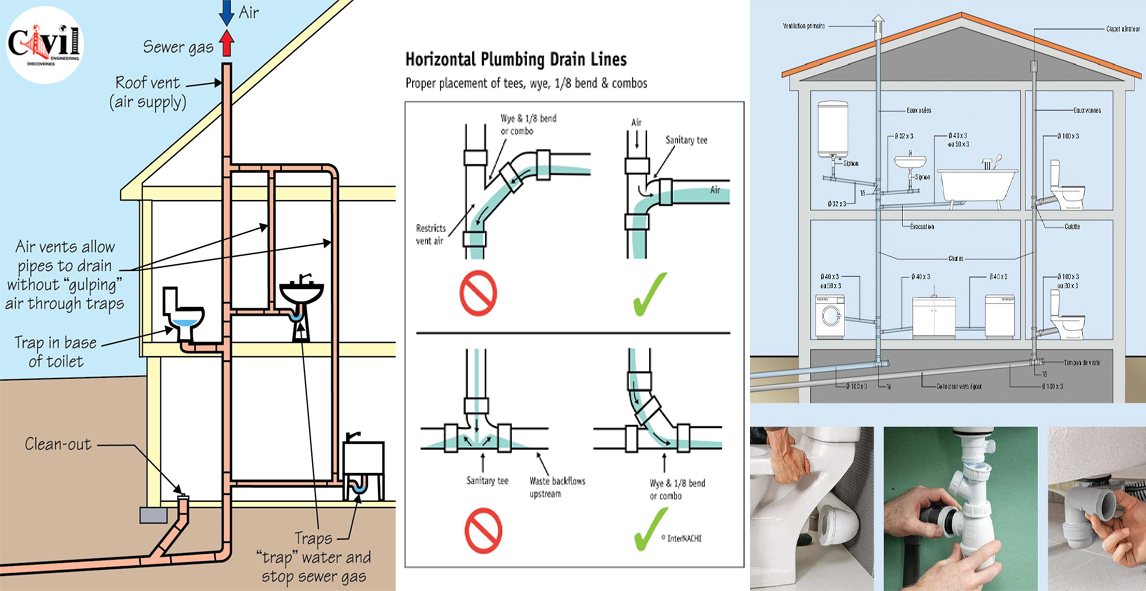Exploring Your Home's Plumbing System Anatomy
Exploring Your Home's Plumbing System Anatomy
Blog Article
We've encountered this great article involving Exploring Your Homes Plumbing Anatomy down the page on the net and think it made perfect sense to share it with you over here.

Comprehending exactly how your home's plumbing system functions is necessary for each home owner. From providing clean water for alcohol consumption, cooking, and bathing to securely eliminating wastewater, a properly maintained pipes system is important for your family's wellness and comfort. In this thorough overview, we'll explore the detailed network that comprises your home's plumbing and deal suggestions on maintenance, upgrades, and managing common concerns.
Intro
Your home's plumbing system is more than simply a network of pipes; it's an intricate system that guarantees you have accessibility to clean water and reliable wastewater removal. Recognizing its components and just how they collaborate can aid you stop costly repair services and ensure every little thing runs smoothly.
Fundamental Elements of a Plumbing System
Pipes and Tubes
At the heart of your plumbing system are the pipelines and tubing that lug water throughout your home. These can be made of numerous materials such as copper, PVC, or PEX, each with its advantages in terms of resilience and cost-effectiveness.
Fixtures: Sinks, Toilets, Showers, and so on.
Fixtures like sinks, commodes, showers, and tubs are where water is made use of in your home. Recognizing how these fixtures attach to the pipes system helps in identifying issues and intending upgrades.
Valves and Shut-off Factors
Shutoffs regulate the flow of water in your pipes system. Shut-off shutoffs are important throughout emergency situations or when you need to make repair services, enabling you to isolate parts of the system without interrupting water flow to the whole residence.
Water Supply System
Main Water Line
The major water line links your home to the local water or an exclusive well. It's where water enters your home and is dispersed to various fixtures.
Water Meter and Pressure Regulator
The water meter procedures your water use, while a stress regulatory authority makes certain that water streams at a risk-free stress throughout your home's pipes system, protecting against damages to pipelines and components.
Cold Water vs. Warm water Lines
Recognizing the difference in between cold water lines, which provide water straight from the primary, and hot water lines, which bring heated water from the water heater, helps in repairing and preparing for upgrades.
Water drainage System
Drain Pipes Water Lines and Traps
Drain pipelines bring wastewater away from sinks, showers, and toilets to the sewer or septic tank. Traps protect against sewage system gases from entering your home and additionally trap debris that could create obstructions.
Ventilation Pipes
Air flow pipelines enable air into the drainage system, preventing suction that can slow down drain and cause catches to vacant. Proper air flow is crucial for maintaining the integrity of your plumbing system.
Value of Appropriate Drain
Making sure appropriate drainage avoids backups and water damage. Frequently cleaning drains and maintaining catches can stop costly repairs and expand the life of your pipes system.
Water Heater
Kinds Of Hot Water Heater
Water heaters can be tankless or conventional tank-style. Tankless heaters warmth water as needed, while storage tanks keep heated water for immediate usage.
Updating Your Pipes System
Factors for Updating
Upgrading to water-efficient fixtures or changing old pipelines can enhance water top quality, minimize water expenses, and enhance the value of your home.
Modern Pipes Technologies and Their Advantages
Explore technologies like clever leakage detectors, water-saving bathrooms, and energy-efficient water heaters that can save cash and lower environmental influence.
Price Considerations and ROI
Calculate the upfront prices versus long-lasting cost savings when taking into consideration pipes upgrades. Numerous upgrades pay for themselves via minimized utility costs and fewer fixings.
Exactly How Water Heaters Connect to the Pipes System
Comprehending how hot water heater link to both the cold water supply and hot water distribution lines assists in diagnosing problems like insufficient warm water or leaks.
Upkeep Tips for Water Heaters
Consistently flushing your hot water heater to remove sediment, checking the temperature level settings, and checking for leakages can prolong its life-span and improve power effectiveness.
Common Pipes Issues
Leakages and Their Causes
Leakages can occur as a result of aging pipelines, loose fittings, or high water stress. Attending to leaks immediately prevents water damages and mold development.
Clogs and Blockages
Obstructions in drains pipes and bathrooms are usually triggered by purging non-flushable things or an accumulation of oil and hair. Making use of drain screens and bearing in mind what goes down your drains can protect against clogs.
Signs of Pipes Troubles to Watch For
Low tide stress, slow-moving drains, foul odors, or abnormally high water costs are signs of prospective pipes issues that must be resolved quickly.
Pipes Upkeep Tips
Normal Inspections and Checks
Schedule annual plumbing assessments to capture concerns early. Look for signs of leaks, rust, or mineral build-up in taps and showerheads.
Do It Yourself Maintenance Tasks
Basic tasks like cleansing tap aerators, checking for toilet leaks making use of color tablet computers, or insulating revealed pipelines in cool climates can avoid major plumbing problems.
When to Call an Expert Plumbing Professional
Know when a plumbing issue needs expert expertise. Trying complex repairs without proper expertise can bring about even more damages and greater repair service prices.
Tips for Lowering Water Usage
Easy habits like taking care of leaks promptly, taking shorter showers, and running full lots of washing and recipes can preserve water and reduced your energy expenses.
Eco-Friendly Pipes Options
Think about lasting plumbing materials like bamboo for flooring, which is durable and green, or recycled glass for kitchen counters.
Emergency situation Preparedness
Steps to Take Throughout a Pipes Emergency situation
Know where your shut-off valves are located and exactly how to shut off the supply of water in case of a burst pipe or major leakage.
Relevance of Having Emergency Situation Get In Touches With Handy
Maintain get in touch with information for local plumbers or emergency situation solutions easily available for fast action during a plumbing situation.
Environmental Impact and Conservation
Water-Saving Components and Home Appliances
Installing low-flow faucets, showerheads, and toilets can significantly minimize water usage without giving up efficiency.
DIY Emergency Fixes (When Relevant).
Momentary solutions like making use of duct tape to patch a dripping pipeline or placing a pail under a trickling tap can minimize damages up until a specialist plumbing technician arrives.
Verdict.
Comprehending the makeup of your home's pipes system empowers you to maintain it properly, conserving time and money on fixings. By adhering to routine upkeep routines and remaining notified concerning modern pipes innovations, you can guarantee your plumbing system runs efficiently for several years to find.
HOW YOUR PLUMBING SYSTEM WORKS
Which Pipes Do What?
Blue lines = fresh water supply entering the building Red lines = hot water supply entering the building Grey lines = pipes carrying waste away from the building and venting pipes carrying gases away from the building (through the roof) YOUR MAIN PLUMBING SYSTEMS
There are two main plumbing systems that support your home s basic plumbing needs one that brings clean water into your home, and one that sends dirty water away from your home. Connected to the toilet, bath, shower, and other faucets in your home, these two systems keep your water flowing in the right directions.
ACCESSING FRESH WATER
Fresh and clean water is brought into your home through the main water supply line . Filtered through one pipe, this water is pressured to flow into the various fixtures in your home at any given time.
This water can be sourced from a well located on your property, a pond or river (mostly cottages), or, as in most cases, from the city s municipal water treatment centre. However, it is important to note that water that is untreated, such as the water siphoned from ponds or rivers, may not be safe to drink. Personal water supplies always need to be treated for hardness and contaminants before consumed.
MUNICIPAL WATER SUPPLIES
Improve taste and odour Remove sediment Eliminate hardness Reduce chlorine COLD WATER SUPPLY VS. HOT WATER SUPPLY
Cold water flows into your home or building through the service line, which then distributes hot or cold water to your fixtures. This line is most commonly run through a central column that runs floor to floor. Hot water runs in short and straight pipes as the longer the pipeline, the more heat that will be lost in the transfer. Having shorter pipes also allows residents to access hot water more quickly.
WASTE WATER SYSTEM
Your wastewater system is divided into two parts pipes that send wastewater away from your home and venting pipes that send sewer gas away from your home. Sewage water travels through pipes that flush the water and waste towards local sewers that are operated and managed by your city or town. Most sewer systems rely on gravity to move the wastewater to where it needs to go.
The further away from your toilet or sink, the larger wastewater pipes become. This allows for waste to be disposed of from various parts of your home or business at once without pipe blockages. The angle and flow of these pipes are also essential for keeping your waste pipes clear of build up.
https://harrisplumbing.ca/how-your-home-plumbing-system-works/

I came across that blog entry on Understanding Your Home's Plumbing Anatomy while doing a search on the search engines. Enjoyed our blog posting? Please quickly share it. Help someone else locate it. Thank you so much for your time spent reading it.
Schedule Now Report this page